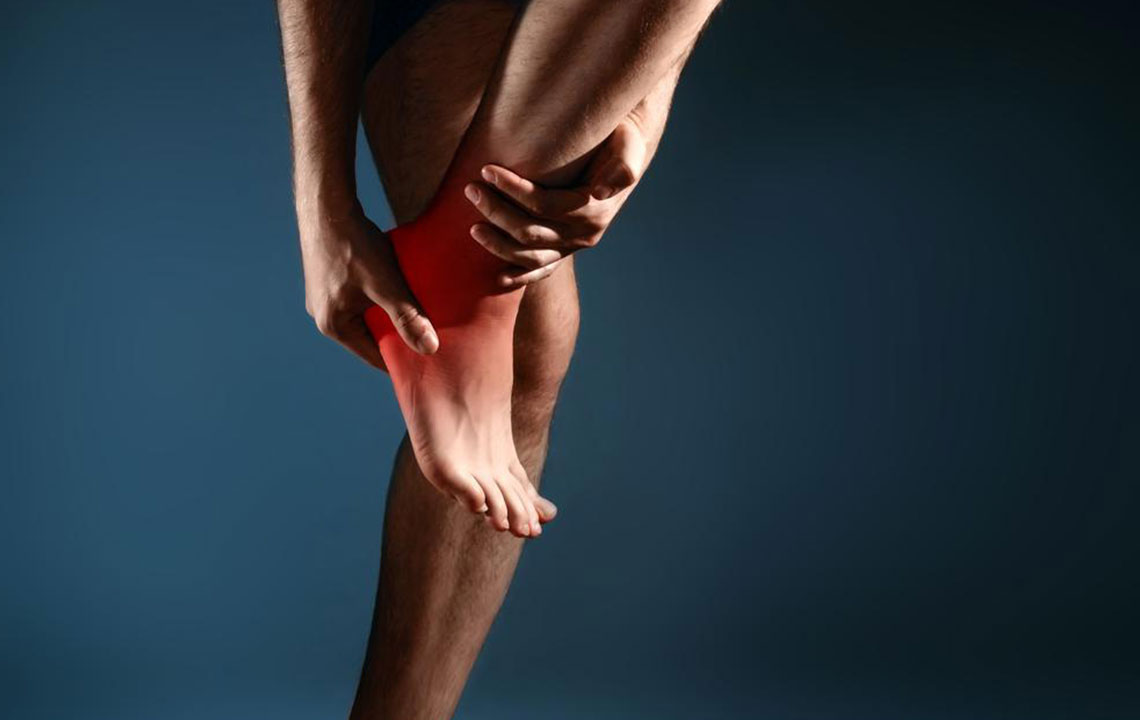Know about Heel Spur Treatment, Types, Causes, and Symptoms
A heel spur is a condition that is caused by calcification in the heel region, which in turn causes a bony protrusion, on the underside of the heel bone. This condition is common in athletes, who are used to a lot of running and jumping. The constant stretching of the plantar fascia is one of the causes of heel spurs. If the band of tissues that cover the heel bone get injured, more calcium is sent by the body, to heal the injured tissues.

Know the causes of heel spur-
When calcium deposits pile up on the underside of the heel, over a period of months/years, heel spurs occur. The strain on the ligaments and foot muscles repeated tearing of the membrane that covers the heel bone(due to injuries), and stretching of the plantar fascia are some of the common causes. Some conditions which trigger the occurrence of heel spur includes— being overweight and obese, abnormalities in walking gait, which causes strain and stress on the heel bone, nerves, and ligaments near the heel. Wrong fitting shoes, especially those that don’t offer adequate heel support can sometimes be one of the attributable causes.
Symptoms Of heel spur-
Generally, heel spurs do not display any symptoms. But heel spurs can cause intermittent or chronic pain when you walk, jog or run. While heel spur itself does not cause pain, the soft tissue injury that often occurs alongside the heel spur is the cause of the pain.
Those who suffer from heel spur, experience a piercing or a jabbing pain in the morning, when they get out of bed. The pain then reduces to a dull ache.
Types of heel spur-
There are two types of heel spurs—the most common one is the posterior inferior spurs which occur under the heel and the posterior superior spurs, which occurs at the back of the heel, close to where the Achilles tendon is attached.
Heel spurs treatment options-
- Non-Surgical Methods
Heel spurs, if not very severe can be treated non-surgically. The stretching of the plantar fascia in the morning after you wake up causes tremendous pain. The pain eases after you walk around for a while. But, the pain recurs after a long walk, or after a long time of rest. Persistent heel pain needs a medical reference and conservative heel spur treatments can help to alleviate the pain. These include-
– Physical therapy
– Stretching exercises
– Use of shoe inserts and orthotic devices
– Strapping to rest the stressed-out muscles and tendons
– Wearing special orthopedic shoes
OTC medication like ibuprofen, naproxen, and acetaminophen, can prove helpful in reducing heel pain. If there is inflammation around the heel region, corticosteroid injections can be taken. In most cases, non- surgical heel spur treatments can help to get relief. Heel spur treatment is needed whether surgically or non-surgically. - Surgery
Even after 10 to 12 months of non-surgical heel spur treatment, if the symptoms do not subside, surgery is the last option. Surgery helps to relieve pain and offer increased mobility to the patient. Surgical techniques include removal of a spur and release of the plantar fascia. Post-surgery, patients may require the support of crutches, canes, bandages, splints, casts and surgical shoes. Like any other surgical procedure, heel spur surgery has complications. These include permanent numbness in the area, infection, nerve pain, scarring, and recurrent heel pain. If the surgery involves the release of the plantar fascia, there is a risk of instability, stress fracture, foot cramps, and tendinitis.
Ways to prevent heel spur-
Wearing proper and fitting footwear can help in preventing heel spurs to a great extent. Buy choosing footwear that has shock-absorbent soles, supporting heel counters and rigid shanks. Also, wearing the apt shoes depending on the physical activity also helps. If you run regularly, always wear running shoes, which has extra cushioning in the front. If your fitness regime primarily focusses on walking, buy walking shoes that offer shock absorption, and cushioning around the heel. To release the tension around the heel muscles, it’s best to warm up and stretch before the start of any physical activity. This ensures that the tension is released from the muscles before they’re subjected to a strenuous workout. Avoid footwear that wears off too much around the heels and soles. Being overweight is also a cause for heel spur. Take measures to reduce your body weight to prevent heel spurs.
Role Of Diet
Dietary changes can play a vital role in preventing heel spurs and can aid the heel spur treatment. Foods rich in silicon, magnesium, and zinc help in maintaining healthy muscles and tendons. Papaya and pineapple, which are high in bromelain, an anti-inflammatory compound, helps in reduce heel spurs. Heel spurs can cause a fair amount of pain and discomfort. In some people, it can hamper their mobility. Preventive measures like a balanced diet, wearing fitting footwear and the right walking gait, are simple, yet effective steps that can help prevent heel spurs.
Above are some of the heel spur treatments, ways to prevent it and the role of diet.


